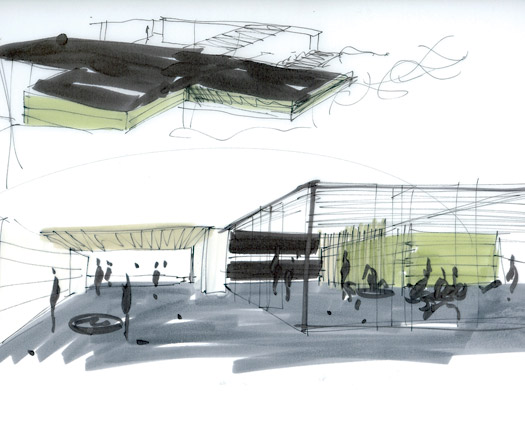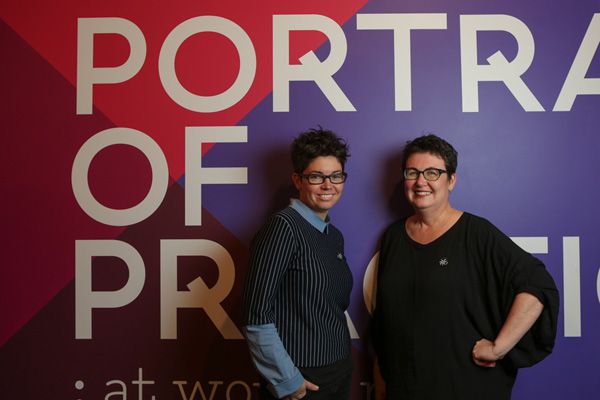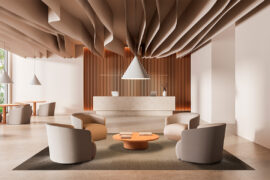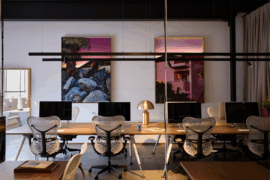The Heide Museum takes a seat for the launch of a collaboration with cook, Stephanie Alexander.
February 16th, 2009
“There is no plan at the beginning, you just see how it evolves and morphs into other things,” says Melbourne architect and designer Chris Connell. A starting point anyone who’s been faced with a blank page and a pencil can relate to.
Whether most of us could come up with a solution that ticks all the boxes of environmental sustainability, comfort and aesthetics the way his Heide Chair is another matter.
Connell designed the Heide Chair [pictured above] for the soon to be opened café at the Heide Museum of Modern Art.
“It’s durable, lightweight and comfortable,” says Connell. “We chose stainless steel and decided on powder-coating on the seat to introduce colour, so design-wise we’re not re-inventing anything.
“I’d been thinking about doing a chair and thought this would be the perfect vehicle. It’s design meeting art, with a story to it.”
The Museum has joined forces with Stephanie Alexander’s Kitchen Garden Foundation to implement the Next Generation project to foster awareness in the next generation (the iGeneration) in the areas of gardening, growing and enjoying fresh produce and environmental sustainability, using the new café as both focus and outlet to the public.
Not content with being mere objects, the 120 chairs are themselves contributing to the Project’s fundraising where, for $3000, patrons are able to purchase the ‘naming rights’ to a chair for the next 20 years.
Chris Connell’s firm are also responsible for the design of the café, which will complement the existing suite of award-winning buildings by McGlashan & Everist Architects.
Heide Museum of Modern Art
heide.com.au
Chris Connell
chrisconnell.com.au

Sketch of the new Heide Cafe by Chris Connell Architects
INDESIGN is on instagram
Follow @indesignlive
A searchable and comprehensive guide for specifying leading products and their suppliers
Keep up to date with the latest and greatest from our industry BFF's!

For Aidan Mawhinney, the secret ingredient to Living Edge’s success “comes down to people, product and place.” As the brand celebrates a significant 25-year milestone, it’s that commitment to authentic, sustainable design – and the people behind it all – that continues to anchor its legacy.

Rebecca Wright, Principal at Plus Architecture, weighs in on the innovative nine-day fortnight work model, shedding light on its impact on work-life balance and productivity.

Parlour Inc, a not-for-profit organisation that promotes gender equity in the architecture industry, will hold its first Sydney event at the University of Sydney next month.
The internet never sleeps! Here's the stuff you might have missed

A stunning indoor space reveals artistry in every aspect, from outlook to underfoot.

With a minimalist aesthetic and an inventive approach to product, ZETR is challenging the way electrical accessories are designed, made and experienced.

From the spark of an idea on the page to the launch of new pieces in a showroom is a journey every aspiring industrial and furnishing designer imagines making.

Central Station by Woods Bagot in collaboration with John McAslan + Partners has been named one of two joint winners of The Building category at the INDE.Awards 2025. Recognised alongside BVN’s Sirius Redevelopment, the project redefines Sydney’s historic transport hub through a transformative design that connects heritage with the demands of a modern, growing city.